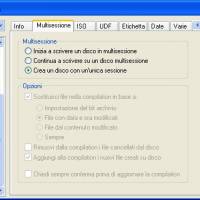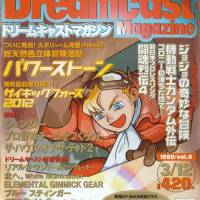Dreamcast DVD

"If only Sega had've included a DVD drive!", it is one of the most common complaints laid down at Sega's door for the failure of the Dreamcast. Sega themselves, promised such an add-on from pretty much the day the system went on sale and kept going with it right until they terminated the its production. But did they ever seriously intend to build such an accessory and how would it have helped in fending the Sony wolves from the door?
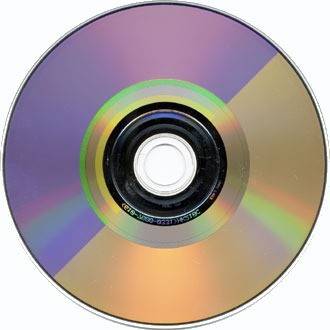
Back in 1997 when Sega announced details of it's latest console, most people expected it to use the CD format. CD was still the standard media format despite competition from Toshiba's state of the art DVD disc format which had failed to really make any ripples at all in Japan. However, in an unexpected move Sega made the decision to support Yamaha's custom designed optical GD-ROM for both their arcade units and home system. The GD-ROM (Gigabyte Disc Read-Only Memory) format carried a capacity of 1.2 gigabytes of memory, which at two times the size of a regular CD was considered more than enough space for the average video game at that time (which was true for most). It was also much, much cheaper than the costly Toshiba DVD format. Sega also hoped that having their own proprietary format would be an easy way of fending off the software pirates that were so prevalent during the CD-rom era.
It was considered a smart move, the industry as a whole wasn't sure whether DVD would win out the technology war against the CD format, or go the way of Laserdisc and end up as a luxurious technology only used by hardcore movie enthusiasts. It wasn't until the announcement by Sony in 1999 that the Playstation 2 would use a state of the art, optical DVD drive, that DVD really achieved a foothold as the standard format for movies and in turn videogames. This resulted in many gamers being swayed away from the now seemingly weaker Dreamcast; six months before the PS2 was even released. Sega had always hinted that they may one day support a DVD drive for the Dreamcast but now they were forced to act and show that the Dreamcast could compete.
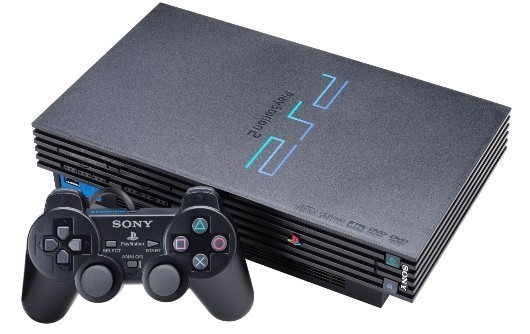
At E3 of 2000, the company confirmed what many commentators had been anticipating since the launch of the Dreamcast by displaying a new Dreamcast DVD player. While not the add-on device most were expecting it appeared to be a stand-alone unit which was silver in colour with a unique transparent orange cover on the top and standard Dreamcast and Sega logos on the front. Its design was typical of most DVD players of the time and although it supposedly supported Dreamcast games it looked more like an entertainment system than a gaming device. No price was ever announced though and apart from this one showing no further information ever released. Most believe that this early prototype simply a shell and did not function as a DVD player at the time.
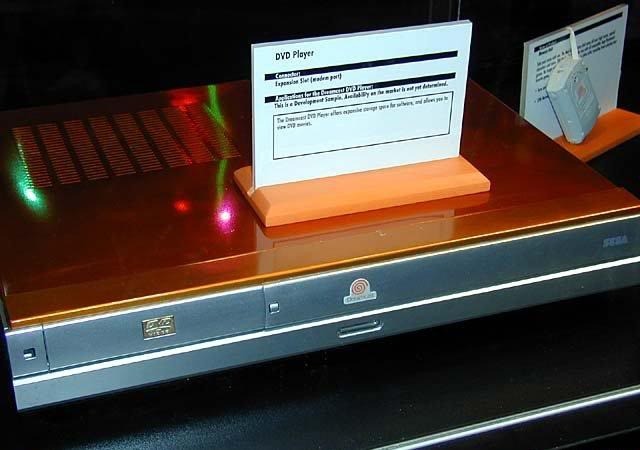
It was around this time that news of how bad things at Sega really were began to seep out into the media and fans wondered whether the Dreamcast DVD would ever see the light of day. It is rumored that Seganet in the US released details that Sega had licensed a company called Duck Motion's state of the art software DVD player for their system which would mean vacate the need for separate hardware because discs would be run through software similar to Power DVD for the PC.
However, with the continued global success of the PS2 and DVD format in general more companies began to adopt the DVD format as standard; Microsoft with their Xbox console and Nintendo (who would later do a complete U-turn) with the Dolphin but it was unclear which direction, if any Sega would take. When asked to comment on the future of the Dreamcast and DVD, Sega of America’s chairman seemed unsupportive of it as a gaming format,
"It's still not clear to me...what DVD does for gaming. Obviously you can pack more data to the disc, but other than that, we're pretty committed to the GD-ROM format"
When most games barely fitted onto the space provided by GD-Rs you have to say that he had a point. However, this was contradictory to Sega of America's Managing Director Charles Bellfield who told IGN that the company did plan to release a DVD add-on for the Dreamcast and that it was coming "in the next few months". Not for the first time was Sega as a company losing its direction?

While fans may have been optimistic due to Bellfield's promise, their optimism would prove to be short lived. Only a few months later Bellfield told Japanese gaming publication Famitsu that the DVD player was currently
"On hold"
and
"something that we will look into again once it can be done at a price structure suitable for Dreamcast"
Mr Bellfield would again go on to state that due to cost that they would continue to support the GD-ROM format and that as most gamers in America already had a dedicated DVD player in their homes (which was the opposite of the situation in Japan) the company would have nothing to gain by switching formats.
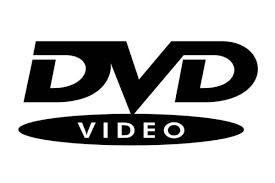
Despite his complete u-turn, he was probably right. At the time of the Playstation 2's Japanese release, the Dreamcast retailed for 19,980 yen in Japan, $199 dollars in the States and £199 pounds in the UK and in two of those regions, a large majority of the population already owned a dedicated DVD player. Creating an entirely separate unit or adding an additional drive would have obviously doubled the console's price in addition to fragmenting a consumer base already scarred by previous Sega add-ons, besides there was nothing inherently wrong with the GD-R technology per se, it was just that the industry had moved on from gaming alone to encompass all media, coining the phrase "home entertainment centres".
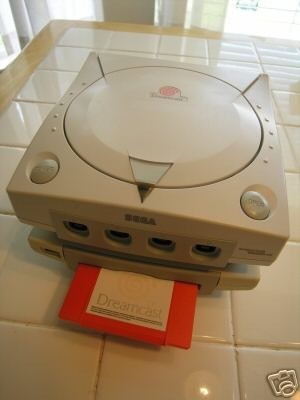
Leaking money at an alarming rate Sega decided that they didn't have the funds to push another add-on and wisely went with the decision to promote the online benefits of their current system, giving away the console in the States with subscriptions of Sega net, and with mobile phone/internet contracts in the UK and Japan. Around this time, a broadband modem upgrade was also released in limited numbers in Japan & North America. However, while the company had some small success in the States, the fractured nature of the online network as well as its pitiful support in Europe meant Sega instead offered a Dreamcast and a DVD player for the same as the PS2 retail price; but it was too little too late.
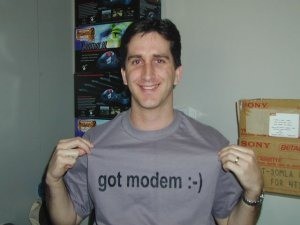
While it is doubtful a DVD drive ever went into actual development, it would be wrong to lay the Dreamcast's commercial failure solely on the fact that it was lacking such a drive. To remain competitive with current competition Sega had to use what was available at the time of planning. The DVD format was a hugely expensive optical device at the time and not guaranteed to become the dominant format. The importance of a DVD player was surprising even to Sony whose console went on to become the most used DVD player in Japan. Obviously, it was a culmination of a variety of factors such as the early release and sparse advertising, lack of support from big 3rd party companies such as EA, a single analog stick on the controller, and the sheer hype of the PS2 which really brought the company to its knees, and it is unlikely the addition of a DVD drive alone would have saved the sinking system.









